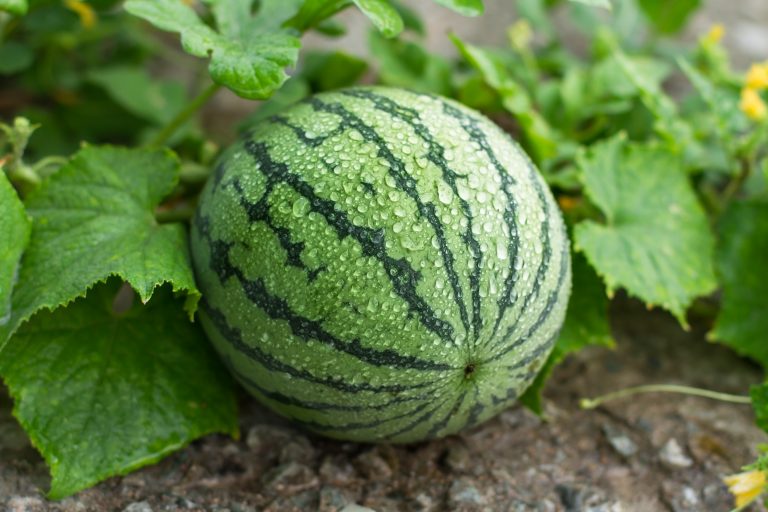Companion planting is a technique that farmers and gardeners have used around the world for thousands of years. It helps crops grow by planting other crops nearby that support each other, protect against diseases or insects, or offer shelter.
When it comes to growing watermelon plants, there are several companion plants that gardeners can use to obtain higher yield and make sure all of their crops stay healthy.
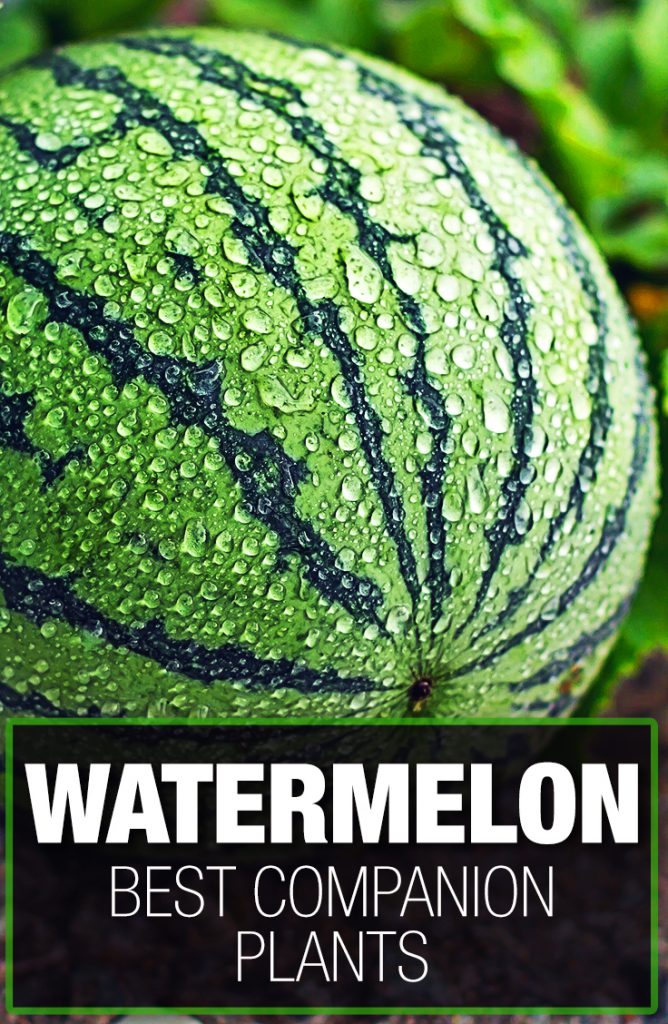
Benefits of Companion Planting
When people think of companion planting, one of the first things that often comes to mind is the three sisters. The three sisters are a companion grouping of beans, corn, and squash, first utilized by Native Americans.
The three sisters are a perfect example of the benefits of companion planting. The beans provide a good source of nitrogen to the squash and corn. The corn stalks become a trellis for the growing bean vines. The squash lies along the ground and helps prevent the growth of weeds, which could steal essential nutrients from the other crops.
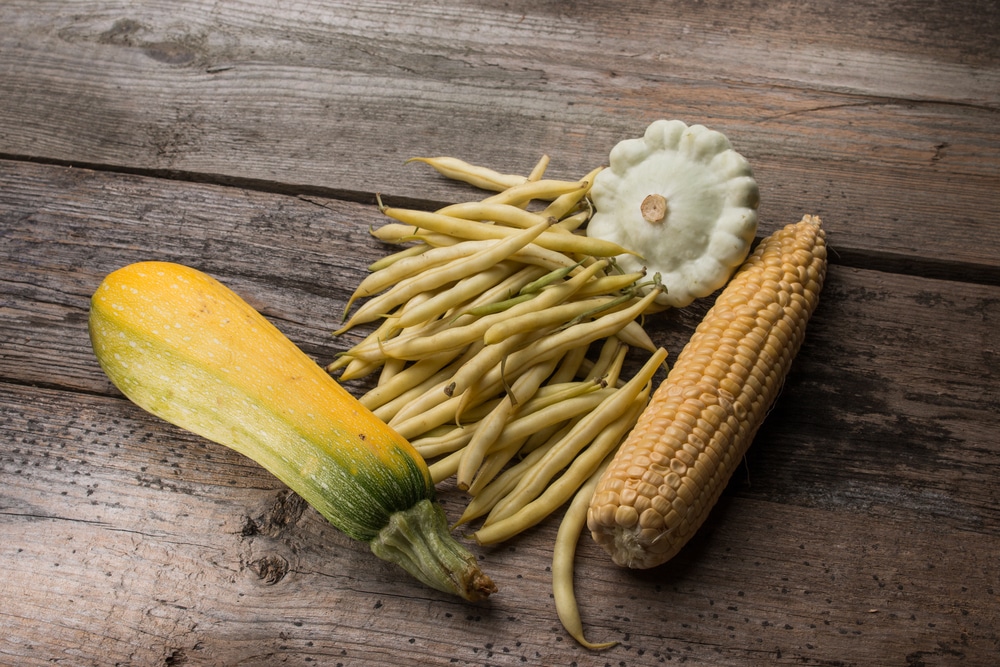
Companion planting is, of course, not limited to these three crops. With a little imagination and an understanding of what a particular plant needs to thrive, gardeners can group many plant types to boost their harvest and help keep their crops healthy.
A companion plant can help to attract beneficial insects or can aid in deterring pests. Some plants will shade others, while a plant that grows close to the ground can prevent weeds and protecting delicate sprouts. Other companion plant types may add nitrogen or other nutrients to the soil.
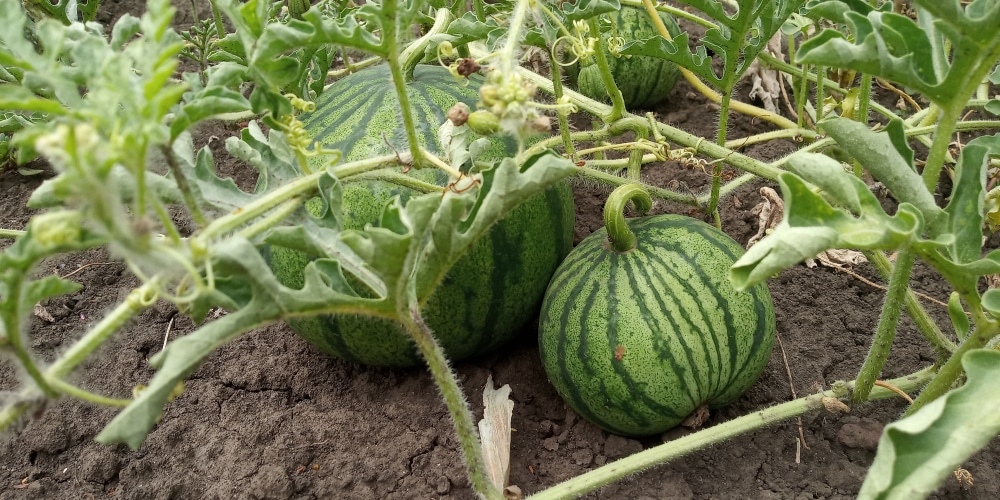
Plants That Are Compatible with Watermelon
When it comes to choosing your companion plants, it’s important to remember two key needs of watermelons. First, they have very large, long vines that require a good deal of space, so any plant near them shouldn’t crowd them. Secondly, their vines need full sun, so planting crops that shade the vines is not a good idea. By keeping those two things in mind, gardeners can find a range of plants that work well as companions.
Garlic, Onions, or Chives
Alliums, such as onions, chives, and garlic, all make good companion plants. Because of their strong smell, alliums often help to deter pests. They also have anti-fungal properties, which can help to keep your vines healthy during the growing season. Also, alliums are usually relatively short, so they won’t shade the the vines too much.
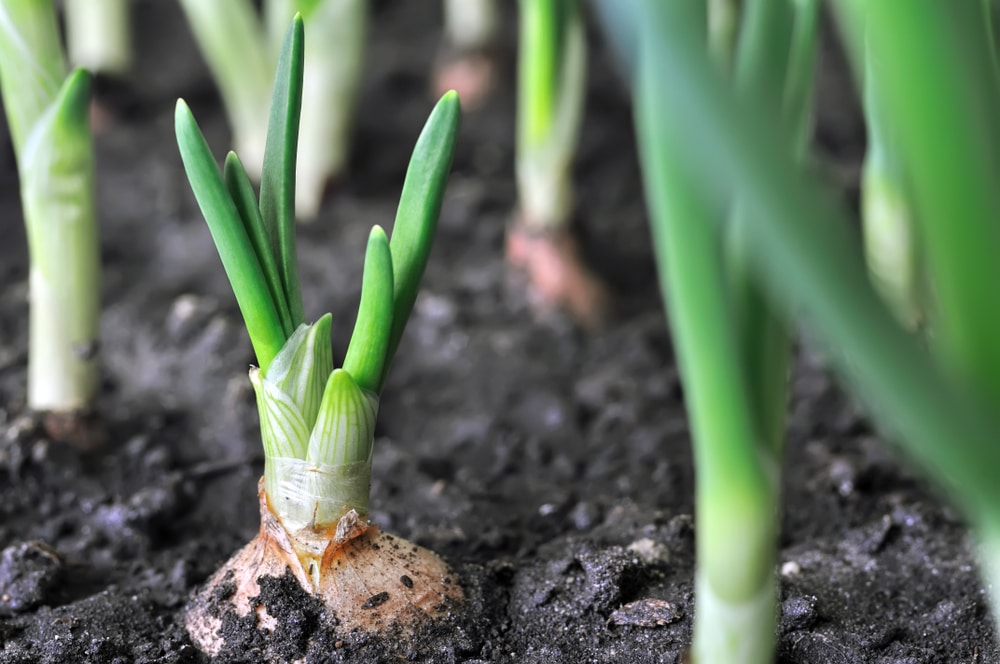
Nasturtiums, Marigolds, Lavender, and Other Flowers
Flowers are some of the very best companion plants, for several reasons. Strongly scented flowers, such as lavender or marigolds, often help to drive away pests. Nasturtiums can also be used for ‘trap planting.’ For example, some moths like to lay their eggs on nasturtiums. If the eggs are laid on the flowers, the watermelon vines are less likely to be disturbed.
However, the most significant benefit of planting flowers is that these flowers will attract pollinators. Watermelon flowers only last about a day, so quick pollination is crucial. Having a lot of pollinators in the garden already can help this process along considerably.
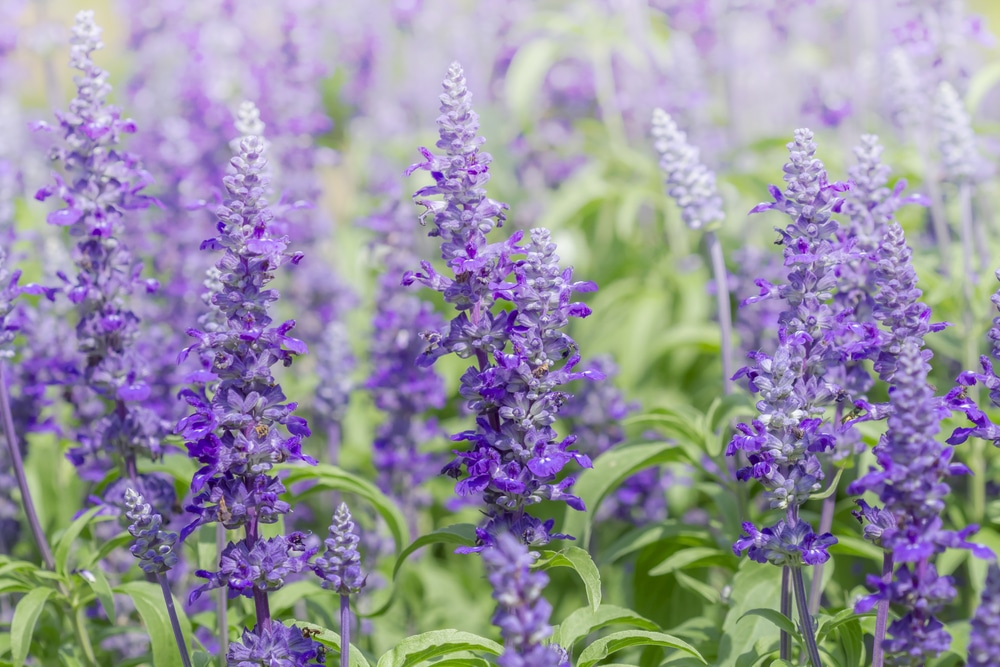
Dill, Mint, or Other Herbs
Herbs are often a good choice to grow near vines because they’re short and won’t crowd or shade the vines. They also often help to drive away pests, such as insects, with their strong scents.
Like flowers, herbs can be planted near or along the side of the garden. They can also be placed in pots near the garden. They don’t need to be planted right next to the watermelons in your garden to be effective.
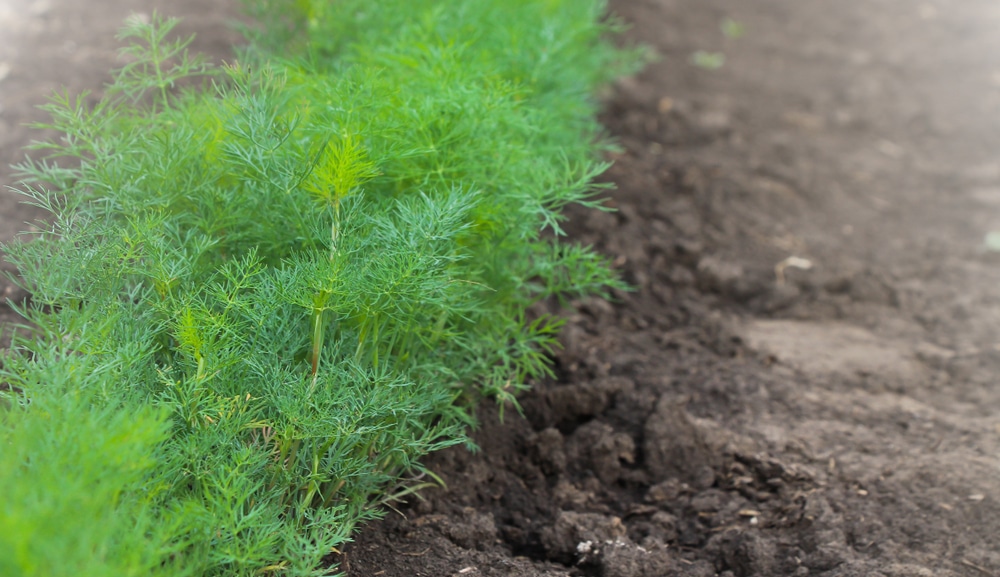
Lettuce
Lettuce is short, so it won’t overly shade vines. It also has short roots that won’t interrupt the watermelon plant’s roots. Lettuce is also unlikely to crowd watermelons as they grow.
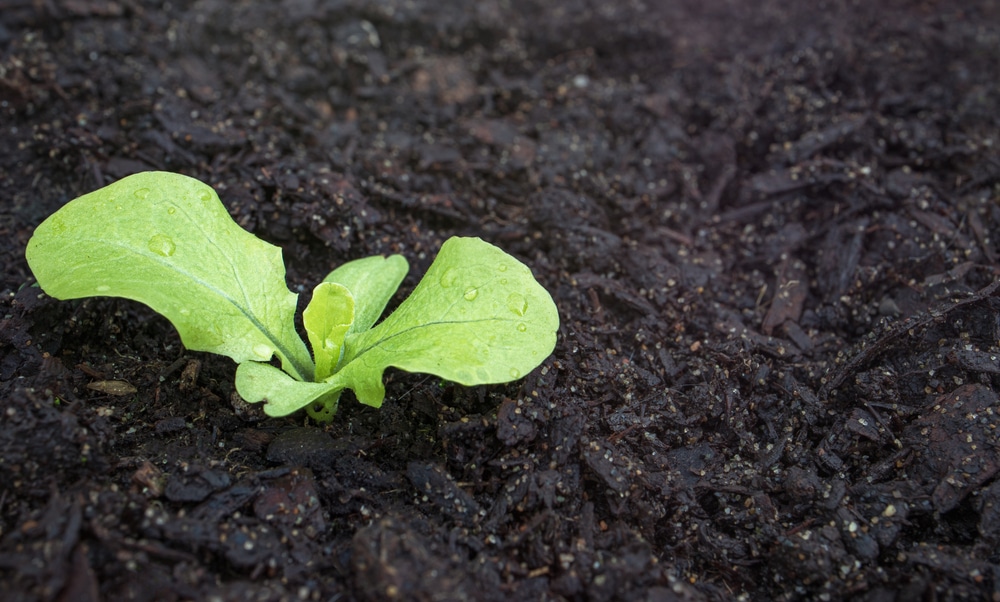
Radishes
Sometimes, people use fast-growing plants to mark areas where plants that take more time to grow are sprouting. Radishes are excellent for this. They grow very quickly and won’t compete for nutrients. They also provide excellent ground cover, stopping unwanted weeds from popping up.
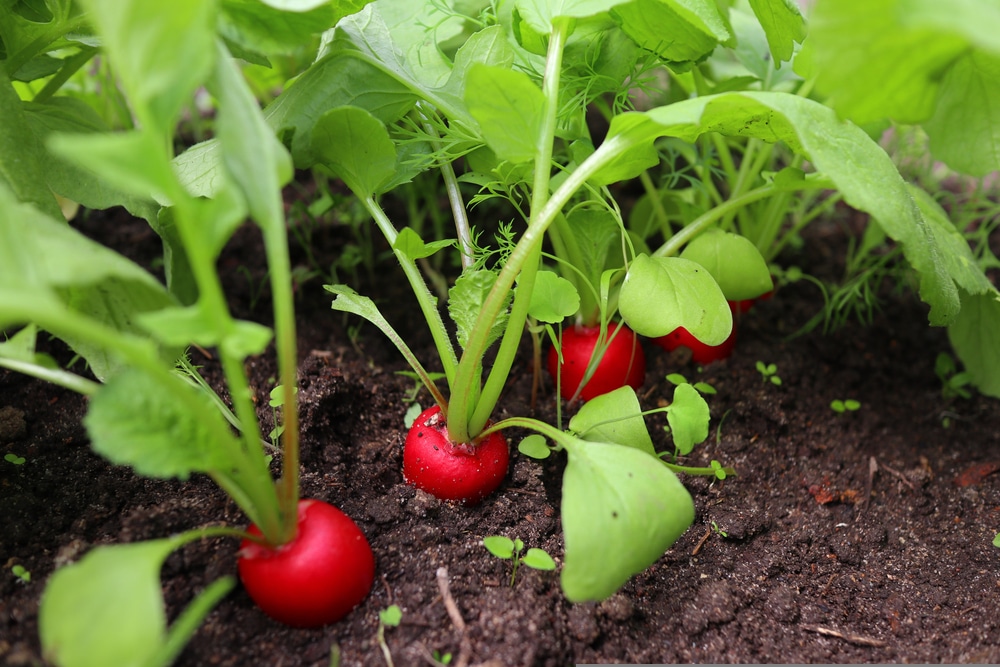
Plants That Aren’t Compatible with Watermelon
While researching what plants grow best alongside them, you may also want to look into what plants shouldn’t be grown near them. While some plants help each other grow, others will compete for light or nutrients or even spread diseases, so choose companion plants wisely.
Squashes and Zucchini
Squash and zucchini shouldn’t be grown near watermelon as they often compete for the same soil nutrients and sunlight. These vegetables also tend to attract cucumber beetles, which can spread to your melons’ vines.
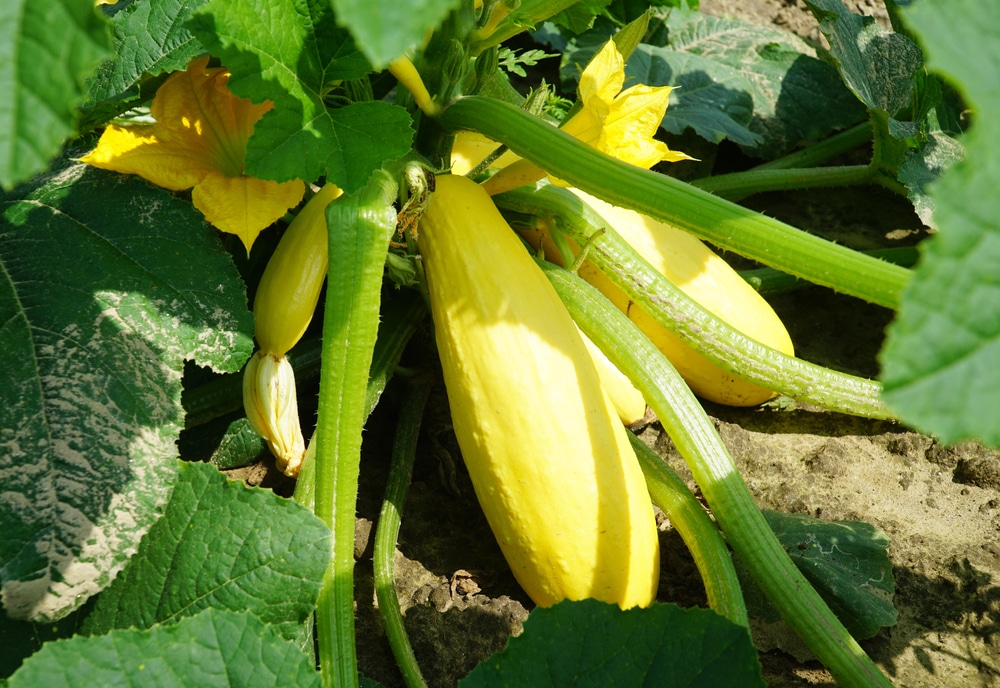
Cucumbers
Cucumbers are not good companion plants for the same reason as zucchinis. They tend to attract cucumber beetles, which can easily migrate to your watermelon plant. You’ll want to keep your cucumber in a different portion of your garden.
Pumpkins
Much like squashes, pumpkin plants tend to compete for space, sunlight, and nutrients. Each plant grows to be quite large, so, as a general rule, when gardening, it’s best to keep these plants separate and ensure they each have their own space to grow freely.
Tomatoes
Tomatoes make poor companions for a few reasons. First, they often grow to be quite tall and can shade the vines too much, causing them to wither. They can also overcrowd watermelons. Overcrowding not only stresses the plants, but it reduces airflow. This can lead to different diseases.
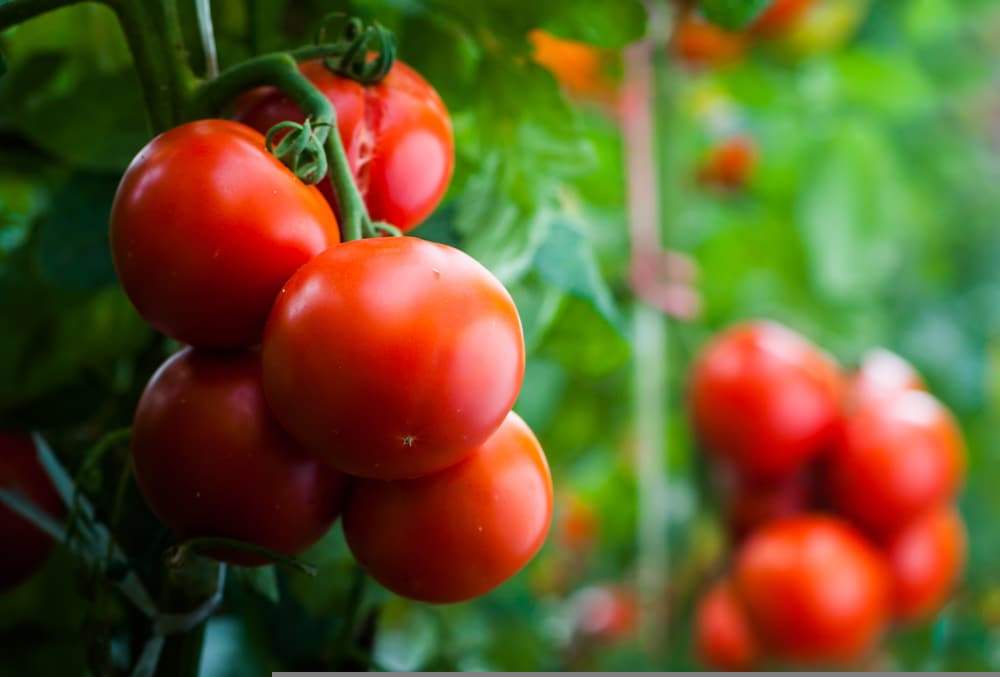
Potatoes
At first, potatoes may seem like excellent companion plants, as they are small and offer good ground cover. However, potatoes tend to attract aphids. Many aphid species will attack melon plants, so it’s best to keep potatoes and your vines separate.
Sunflowers
Although many flowers are an excellent choice companion plants, tall flowers, such as sunflowers, should be avoided. These plants will often offer too much shade. In addition, sunflowers often attract aphids.
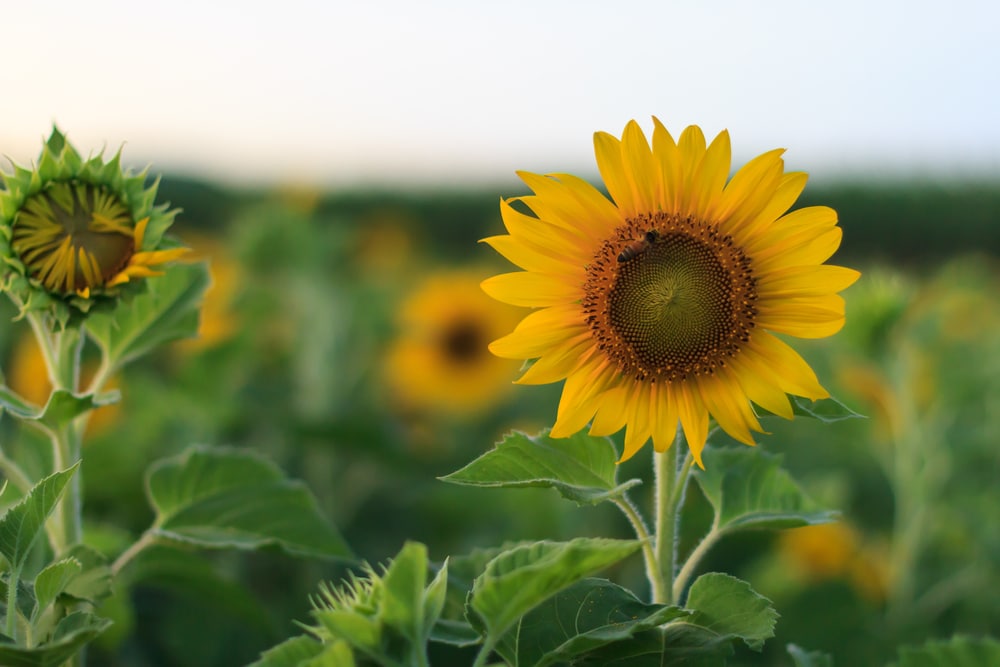
Whether you’re looking to get into commercial farming or you’re merely interested in gardening and growing your own food, watermelon can be a fun crop to delve into. Adding companion plants not only helps to support the growth, but they can also add more variety, more color, and more interest to your garden.

